John Hurrell – 11 August, 2011
This exhibition has a new feature - a lot of glowing primary colour surrounded by the predominant grey, although Bennett has used bright red before. And now, like then, this chroma is not particularly successful, for it hovers or floats in a disembodied way above the moving figures and theatrical props like something fluorescent or a type of afterimage.
In this Two Rooms show, not too long down the track from his and Mike Hodgkin’s spectacular contribution to this year’s Living Room festival in Auckland’s GBD, Gregory Bennett presents one new looped animated video and five large prints.
He has made both types of digital work for several years now using dystopian (slightly Boschian) nightmares as a theme, and I have always preferred the former to the latter. I think of the title as ironic and of Bennett as a kind of Len Lye meets Fritz Lang, a kinetic artist besotted with motion - and not some sort of Orwellian Escher, which you might be forgiven for thinking judging from his vertically organised static works.
This exhibition has a new feature - a lot of glowing primary colour surrounded by the predominant grey, although Bennett has used bright red before. And now, like then, this chroma is not particularly successful, for it hovers or floats in a disembodied way above the moving figures and theatrical props like something fluorescent or a type of afterimage. It is not locked within the forms of the rendered moving masses.
Oddly his kinetic sensibility is more sculptural than filmic, tightly organised spatially and not holistic. It tends to have directional vectors and is localised, involving accelerating or decelerating speed and shapes made of collective bodies centred around a core. And it exploits illusion, not accentuating the picture plane but moving through it.
Although the new colour introduces an emotional vibrancy to the animated sequence as the images gradually move from left to right - with Bennett’s characteristic naked men striding up long staircases and marching across broken concrete slabs or flat orthogonal boxes of grass - it creates a sort of optical haze that I think muffles and flattens out the volume of the energetic figures. The kinetic impact is lessened.
The large prints are more playful, exploring the formal elements of drawing and ambiguous space like Escher prints or Japanese woodcuts do, but of course dense with swarms of little men clambering in and out of rectangular towers and populating any walkable surface they can find. For my money the garish colour spoils these works, for Bennett’s great gift is as an animator of looped activities, not as maker of stationary images - even when they have no colour. What looks corny and clumsy as a static print takes on another dimension when embedded within a flowing stream of movement. The dynamic energy of these insectlike hordes with their long shadows - reinventing team gymnastics, chorus girl formations and military logistics - is rivetting as digital animation, but dull when made into over-intricate wall ‘posters’.
John Hurrell
Recent Comments
Jessica Wall
At first I thought that the animation was quiet innovative and intriguing, but then I remembered some 3D video I ...
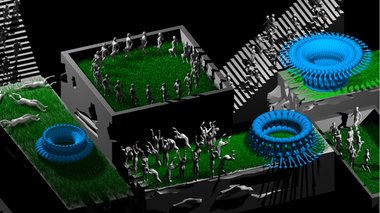
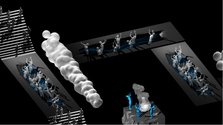
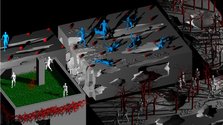
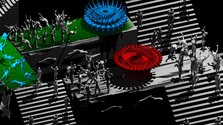
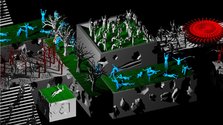
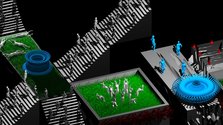







 Advertising in this column
Advertising in this column Two Rooms presents a program of residencies and projects
Two Rooms presents a program of residencies and projects



This Discussion has 1 comment.
Comment
Jessica Wall, 4 p.m. 22 August, 2011 #
At first I thought that the animation was quiet innovative and intriguing, but then I remembered some 3D video I had seen about 20 years ago in the stone age of digital animation technology that were composed arrayed simplified figures dancing and climbing. This was certainly more interesting but seemed slightly behind the times. The collaborative 3D animation work of more marginalized artists such Marcus Williams/Susan Jowsey (with their wonderful skin covered blobs) or Brit Bunkley (who was one of the first in the country to work in this medium in the fine arts realm, and the one of the highest profiles internationally) have a bit more imagination.
Participate
Register to Participate.
Sign in
Sign in to an existing account.